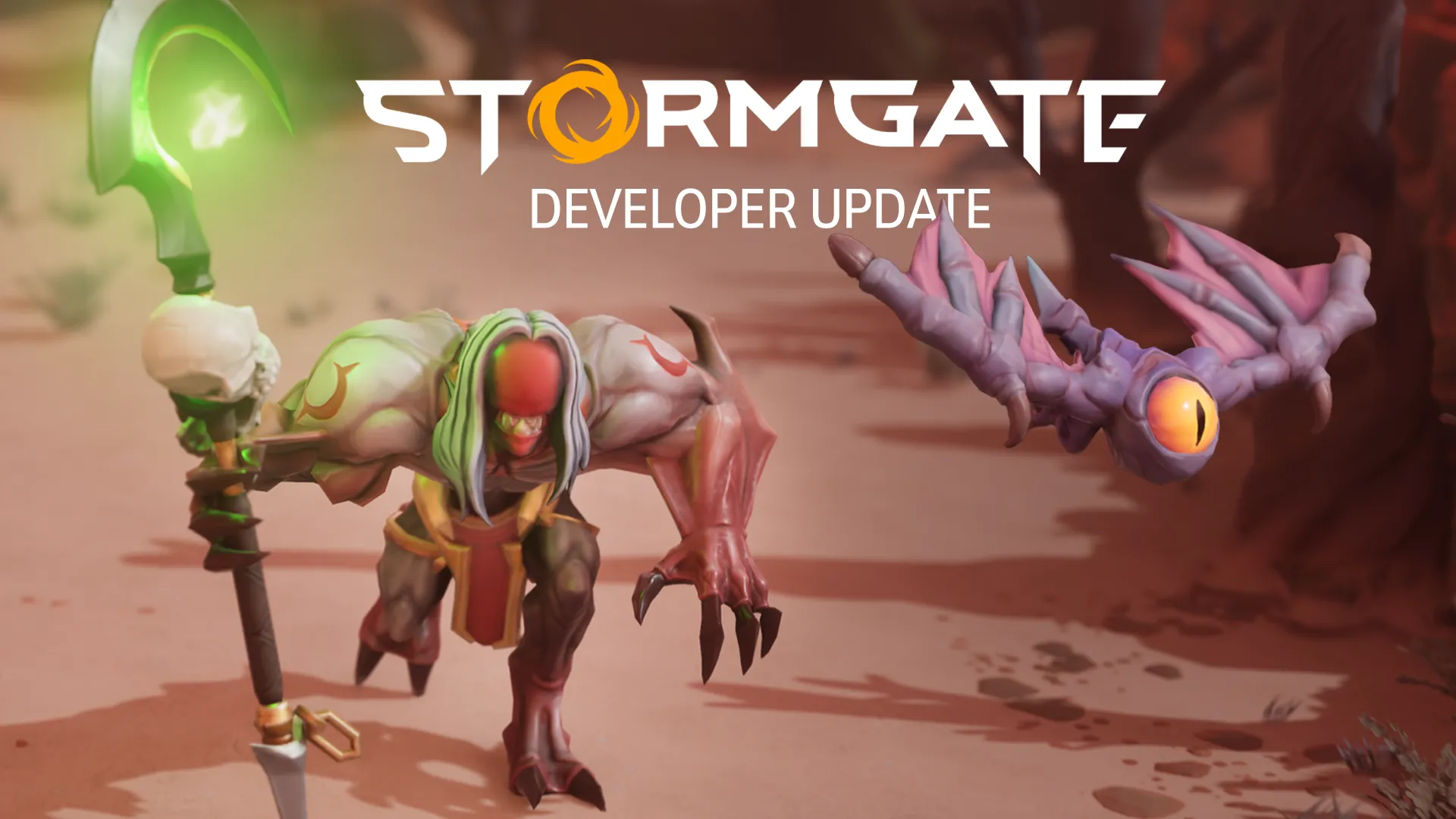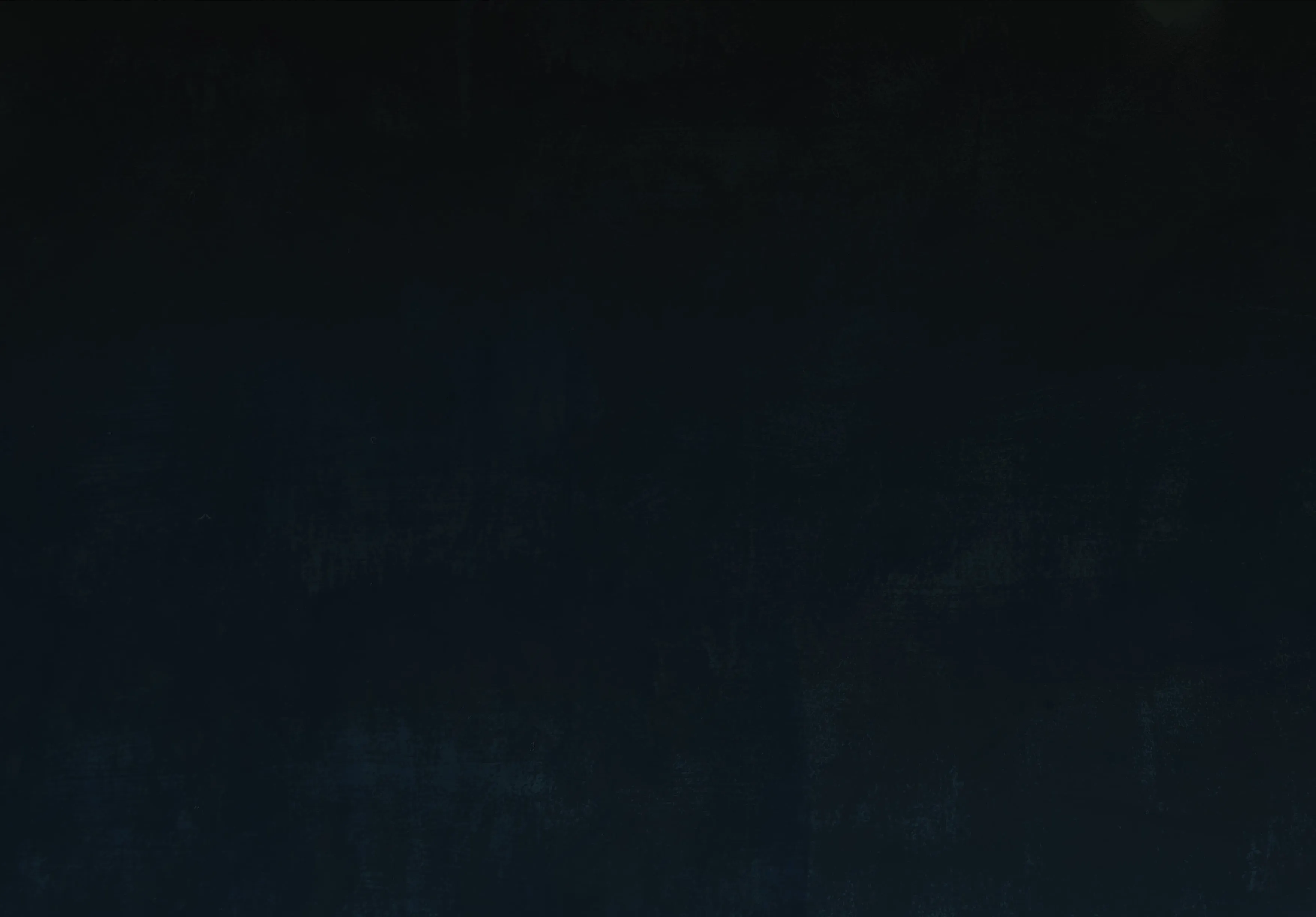Stormgate Developer Update - April 12, 2024

Hello, everyone!
Tim Campbell here. We’ve reached an exciting point in Stormgate’s development where the team is making quick progress on many fronts and we have a lot to show you.
Since we founded Frost Giant and embarked on the journey of developing Stormgate, we’ve been committed to the idea that involving our community (you!) directly in the creation process would ultimately lead to a better game than we would be able to develop alone.
I have personally seen this theory proven out time and again during Stormgate’s first few years of development. Community feedback has helped shape core gameplay, competitive balance, map design, the relative priorities of a LOT of features, as well as the overall player experience.
As the team prepares for the upcoming release of our next closed beta test (codenamed Frigate), we’d like to share some insight into our design process as well as an early look at some of the progress we’ve made since our last playtest. Let’s start with an overview of how we’re approaching our maps & game modes.
Maps & Modes
Stormgate’s ranked 1v1 competitive and 3vE (3P co-op vs. AI) cooperative modes are playable. However, you may be wondering how we’re going to improve those modes and increase the amount of content available for them. You may be curious about the state of our Campaign missions, something we haven’t discussed much yet. Or, you may have seen a bunch of maps set in lush, green forests and wondered–hey, where’s the post-apocalypse? You may have seen that we’re working with our friend Samwise Didier to create all new “Creep families” to replace our placeholder Creep Camps (farewell, chickens!). So, when are those going into the game? In reality, the answers to all of these questions are intertwined, and I’m going to try to break it all down and show you some examples of how we approach various development challenges.
Development Approach
When creating a multi-faceted game experience like Stormgate (similar to the experience many of us had working on other RTS games back at Blizzard), our development team often faces complex production challenges that stem directly from being a small team trying to build a really big game.
With Stormgate, we’re not just making a 1v1 competitive game (a huge challenge on its own), but we’re also creating a compelling cooperative experience, a high-quality campaign experience (playable alone or with friends), a powerful editor for custom game content, a 3v3 team-based competitive mode, and more. Each of these modes and features requires its own unique content, but they nearly all have to flow through the same small groups of developers and can frequently compete against each other for attention.
How do we juggle it all?
Well, every team has its own approach. Blizzard traditionally took advantage of very long development timelines, with games in development for many years before being formally announced.
Other teams have thrown massive team sizes at these same problems. Even then, StarCraft II didn’t introduce Co-op Commanders until post-launch DLC after three premium boxed product releases. Other recent premium RTS releases have chosen to ship their 1.0 releases without significant features like map editors, replays, or even ranked competitive matchmaking, and instead add them in later as post-launch updates. Simply put, the RTS genre has such a large surface area and such a unique set of development challenges that every team (large or small, indie or not) has to find their own way to address them somehow.
For us, our approach comes down to trying to make smart, efficient decisions every step of the way–even if that means delaying a greatly-desired feature until the proper infrastructure can be put in place to support it or postponing certain types of content until other content with greater dependencies has been made first. At every turn, we do our best to choose the long road by avoiding doing rushed, throw-away work, and instead are building from the foundation-up with an eye towards building a sustainable, stable, fully featured game experience.
The advantages of this approach are far-reaching but can be seen most clearly in SnowPlay - our own custom RTS technology layer - which was developed first (before the start of our work on game content) and has provided the architecture needed to support robust features like matchmaking, replays, and observers, even during our early Alpha and Closed Beta phases.
Multiple Game Modes, One RTS
Part of how we make this balancing act work when we have a very small development team is by having each mode fill a very specific role for us, while making sure that they each contribute to the overall game project.
Competitive 1v1, for example, is where we dial in core features, such as unit movement, selection, and responsiveness as well as how the tech trees feel, how different terrain types affect gameplay, and how our map sizes and camera position interact with each other to provide the best player experience.
We are intentionally building each 1v1 map to have unique characteristics compared to the others - often varying wildly in size, terrain density, amount of open space, Creep placement, resource positioning, ramp width, etc. This variety allows us to get feedback from the community about what players like or don’t like, as well as to collect actual hard data on win rates so that we can identify the reasons why each faction might favor (or struggle with) different map types.
At this stage of development, the visuals for maps are a distant secondary concern to how they help us improve the feel of gameplay. In fact, none of our 1v1 maps has received any sort of formal art treatment beyond a level designer quickly applying basic tilesets of ground textures and doodad props.
Environmental art is a huge part of what gives an RTS its final “look”, and we intentionally haven’t dedicated significant resources on this area–for good reason. Hardening the art on our maps too early would hinder our ability to adjust the layout based on community feedback (or would result in lost work when we effectively throw out a fully-artified map in order to take it back to the drawing board and make improvements). You can expect to see visual changes to our 1v1 maps in the future as we finalize their layouts and do art passes on them, including changing tilesets, adding landmarks and distinctive visual elements, and incorporating additional terrain types. We have yet to show you the final quality bar we’re aiming for on our maps, but when we do, we think the impact will be significant.
We have a couple new 1v1 maps ready that will be included in our next playtest, as well as updates to some of our original layouts. We’re also going to add a randomized map pool to make the competition on the ladder more interesting.
Cooperative 3vE, by comparison, is used more as our testbed for teamplay and experimental gameplay ideas. Risky “out-there” ideas are almost always implemented in Co-op first so we can try things out and experiment.
Sometimes we like these ideas so much that we migrate them into 1v1. For example, if we find a Hero-specific unit or ability that we love, we can find a way to integrate it into the base faction or in other modes. We recently tried out our “interactive corpses'' feature with Maloc’s Burned Ones in Co-op, but the feature will be expanded into a wider range of core faction abilities in the future. That way, our designers can experiment with an entirely new set of ability archetypes like resurrection, animate dead, cannibalize, or even corpse explosions. Similarly, the Infernal top-bar ability to spawn an Effigy started out as a co-op Hero ability, but was promoted into the core Infernal faction after playtesters responded very positively to it.
We also use Cooperative mode to push our tools and Editor capabilities, because essentially each new scenario or our mutators are built by our design team by “modding” our gameplay using the same tools that will be released to the community. We shared a little about what the Editor looks like at this stage recently at GDC, in case you missed it.
Campaign is where we bring our game world to life. This is where we introduce our heroes and villains, where the tone of our game world and conflicts are established, and where many players will ultimately decide which faction they’ll prefer to root for and identify with. Because of this, the Campaign narrative heavily drives our decision making process about which assets we should develop and in which order we should prioritize them.
Because of our relatively small team size, we don’t have the ability to make many completely unique environment and character assets for each game mode. Instead, we plan around what the storyline for Campaign requires, and then we circle back to the other modes and incorporate those campaign assets where it makes sense. This is an age-old practice in RTS development (including on every RTS project that I’ve been a part of) and it is very effective at “force multiplying” our output by allowing Campaign assets to be reused, repurposed, and creatively tweaked in numerous ways by the development team.
However, an unfortunate side effect of this is that because we have not been able to share a lot about our Campaigns yet, we have also not been able to share a lot of the over-the-horizon content that we’ve been building for it–content that you can look forward to being incorporated into our competitive and cooperative modes in the future… This is one of the first things that I’d like to start sharing more about with you.
Development Progress - Campaign
Our first six Campaign missions are well underway and are in a playable state. Our team is playtesting and giving feedback on these campaign missions each week.
We still have a lot of work ahead–these missions will be in an early state at the start of Early Access and we will be working directly with the community to improve them on our road to 1.0, but we’re already actively iterating on every aspect of the missions in order to make them as fun as possible.
In the grand traditions of Blizzard campaigns, we are working hard to give each mission its own unique gameplay twists, distinctive environments, and memorable enemies, including entirely campaign-specific characters and minibosses.

Some of the things that we’re currently working on for the Campaign include:
- New Environment Biomes (or “Tilesets”)
- Our story is set in a post-apocalyptic world that has been ravaged by war and invasion for decades. Even though you’ve mostly only seen a green forest so far, we are well underway on building out a range of more apocalyptic environments, including a destroyed cityscape, ruined science facilities, desolate desert wastelands, and some ancient underground vaults.
- Once these environments are finished, we will circle back to the other modes and incorporate these tilesets into our existing 1v1 and Co-op maps - so you’ll see a gradual conversion of our basic forest levels into wastelands and urban ruins.
- I’ll share some samples of the assets we’re creating to build out Stormgate’s destroyed cityscape below.
- New “Time of Day” lighting states
- We have missions that occur at night, dawn or dusk, or even underground in pitch darkness.
- The dark environments will be coupled with unit lights (including headlights and flashlights) to illuminate where your troops are.
- These lighting states include the ability for designers (and content creators) to trigger day/night changes (As a repeating cycle, or one-off transitions).
- New Water Terrain Type
- Many of our missions involve water in one form or another, including swamps, rivers, and the ocean. We are well underway on a water solution that can influence gameplay in some awesome ways while being just as easy (if not easier) to place in the Editor as Warcraft III’s water.
- Water prohibits building placement, includes shallow/deep delineation, and enough pathfinding flexibility to allow some units to be blocked by shallow or deep water while allowing others to travel over (or through) it.
- No, we’re not building naval units into our initial factions… but, yes, naval movement is being supported out-of-the-box with our editor so that YOU can, if that’s your thing.
- New Weather Effects
- Several campaign missions feature weather effects such as monsoon-level rainstorms, heavy wind that blows trees and grass around, lightning strikes, and even tornados that wander around the landscape destroying things they hit.
- Yes, we’re going to release these for modders and content creators to use in creative ways as part of our Editor.
- Neutral Buildings
- Several types of interactive structures will be encountered throughout the campaign, including the cantinas that serve as watering holes for hireable mercenaries and the lost vaults that often contain special team-wide bonuses.
- These will eventually be used on maps in other modes, but are being built initially to fill Campaign needs.


- Story Characters
- The storyline we’re creating involves a wide range of characters that are not part of our core 1v1 faction or our co-op Heroes. These have taken a lot of effort to make, and we’ll share some specific examples in the weeks ahead.
- Some of the characters are “named” protagonists or antagonists that may be elevated to co-op Hero status in the future. But for now, they are unique to Campaign missions - each treated as a Hero-equivalent with their own special models, animations, voices, abilities, and attacks to look forward to.
- Other characters are less unique and will primarily help fill out the game world, including scientists, prisoners, marauders, and a whole range of animal critters and deadly monsters.
- Here’s a sneak peek at the “Pygmy Jerboa” critter that lives in our desolate desert “Deadlands” tileset. It’s wise in the ways of the desert and creates its own water.:

- Campaign-specific Features
- Campaigns are often more complex beneath-the-hood than they might seem to be on the surface. They tend to require a lot of special features and technology (definitely the case with ours!) and we have made great progress towards implementing a lot of special requirements that aren’t currently visible to players in our Alpha and Beta playtests, including:
- Saving / Loading / Transitioning directly between maps without exiting back out to the menus.
- “Black Mask” to completely obscure unexplored areas.
- An “Item system” that allows Hero units to be able to pick up and use items during missions, like a quest objective, key, or medkit.
- A Mission Briefing screen that gives players a narrative update and a preview of their mission objectives before actually starting the mission.
- Special equipment options that can be equipped in the Mission Briefing Screen to customize the effectiveness of your force in the upcoming mission.
- Campaigns are often more complex beneath-the-hood than they might seem to be on the surface. They tend to require a lot of special features and technology (definitely the case with ours!) and we have made great progress towards implementing a lot of special requirements that aren’t currently visible to players in our Alpha and Beta playtests, including:
Thank you for reading this far. Along with this dev blog, we also recorded a development update video that includes a first look at many of the things we’ve been working on recently, including a new plague-spreading Infernal unit, the Hexen.
We’re grateful to all of you who have been a part of our journey so far and we can’t wait to show you what we’ve been building in our next closed beta playtest, which we’re planning to release for our playtesters on April 30. Please let us know what you think by joining us on the official Stormgate Discord.
See you in Stormgate!
-Tim Campbell, Game Director




